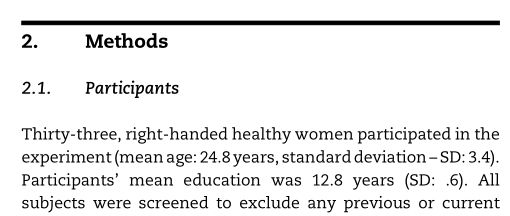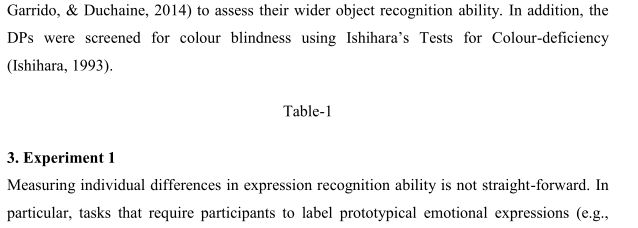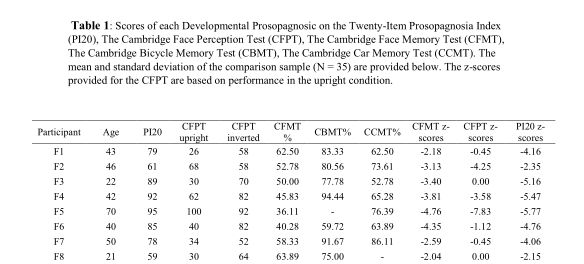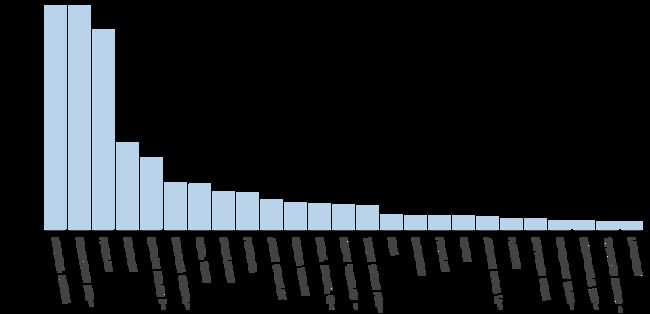CORTEX
| EIF | Publication history | Publisher | Frequency | Impact factor | Research field |
|---|---|---|---|---|---|
| Sergio Della Sala | 1964-present | Elsevier(UK) | 10/year | 4.907(2017) 4.97(5年) | behavioral science;neuroscience & neurology |
- 主编介绍:Sergio Della Sala
FBPsS(British Psychological Society), FRSA(Fellowship of the Royal Society of Arts), FRSE (Fellowship of the Royal Society of Edinburgh)(born 1955) is a neuropsychologist.Della Sala was Professor of Neuropsychology and Honorary Consultant in Neurology at the University of Aberdeen from January 1994 to March 2004.As of June 2017, he is with the University of Edinburgh.He has been the editor of "Cortex (journal)") since 2001.He is interested in cognitive neuropsychology, in particular in amnesia, visuo-spatial and representational neglect, apraxia and the cognitive deficits of Alzheimer's Disease.(主要研究认知神经心理学,特别是在失忆症、视觉空间和具象性忽视、失用症和阿尔茨海默氏症的认知缺陷方面)
Part 1 Basic Information of BBS
-
Scope:
CORTEX is an international journal devoted to the study of cognition and of the relationship between the nervous system and mental processes, particularly as these are reflected in the behaviour of patients with acquired brain lesions, normal volunteers, children with typical and atypical development, and in the activation of brain regions and systems as recorded by functional neuroimaging techniques. -
Type:
- Article(Research report):These submissions must report important and novel material. No word or reference limit.
- Editorial(社论):Editorials will be solicited by the Editors. Authors wishing to submit an editorial should first seek the advice of the Editors. An editorial could also be linked to the cover, explaining its relevance to the readers.
- Review:Present a critical appraisal of the literature on a research issue. No word or reference limit.
- Case report:This section publishes important and novel material using a single case or multiple single cases approach, reporting detailed description of signs and behaviour.
- Letter:These are short reports (up to 1,000 words, plus one figure or table and no more than 15 references) with no abstract. These short articles will benefit from a fast track, and, if accepted following the peer-reviewing process, will be published more swiftly than full-blown research papers.
-
Open Access
- Subscription:
No open access publication fee payable by authors. - Gold open access:
• Articles are freely available to both subscribers and the wider public with permitted reuse.
• The gold open access publication fee for this journal is USD 3000, excluding taxes.A gold open access publication fee is payable by authors or on their behalf, e.g. by their research funder or institution.
- Subscription:
| Review speed | Acceptance | Production speed | Open access | Embargo period |
|---|---|---|---|---|
| 5 weeks | 31 % | 2 weeks | Optional | 12 Months |
Elsevier :Journal Finder
Part2 Submission information
-
Ensure that the following items are present:
- One author has been designated as the corresponding author with contact details:
• E-mail address
• Full postal address(通讯地址)
- One author has been designated as the corresponding author with contact details:
-
All necessary files have been uploaded:
- Manuscript:
• Include keywords
• All figures (include relevant captions)
• All tables (including titles, description, footnotes)
• Ensure all figure and table citations in the text match the files provided
• Indicate clearly if color should be used for any figures in print
Graphical Abstracts / Highlights files (where applicable)
Supplemental files (where applicable)
- Manuscript:
Part3 Style and format for articles
-
Formatting requirements
There are no strict formatting requirements but all manuscripts must contain the essential elements needed to convey your manuscript, for example Abstract, Keywords, Introduction, Materials and Methods, Results, Conclusions, Artwork and Tables with Captions. If your article includes any Videos and/or other Supplementary material, this should be included in your initial submission for peer review purposes. Divide the article into clearly defined sections. -
Article structure
-
Subdivision - numbered sections
Divide your article into clearly defined and numbered sections. Subsections should be numbered 1.1 (then 1.1.1, 1.1.2, ...), 1.2, etc. (the abstract is not included in section numbering). Use this numbering also for internal cross-referencing: do not just refer to 'the text'. Any subsection may be given a brief heading. Each heading should appear on its own separate line.
-
Keywords
Immediately after the abstract, provide a maximum of 5 keywords, using American spelling and avoiding general and plural terms and multiple concepts (avoid, for example, 'and', 'of'). Be sparing with abbreviations(缩略语): only abbreviations firmly established in the field may be eligible.
-
-
Figures and tables embedded in text
Please ensure the figures and the tables included in the single file are placed next to the relevant text in the manuscript, rather than at the bottom or the top of the file. The corresponding caption should be placed directly below the figure or table.-
Table
Please submit tables as editable text and not as images. Tables can be placed either next to the relevant text in the article, or on separate page(s) at the end. Number tables consecutively in accordance with their appearance in the text and place any table notes below the table body. Be sparing in the use of tables and ensure that the data presented in them do not duplicate results described elsewhere in the article. Please avoid using vertical rules and shading in table cells.
-
-
Figure
1、Electronic artwork
(1)General points
• Make sure you use uniform lettering and sizing of your original artwork.(字母大小统一)
• Preferred fonts: Arial (or Helvetica), Times New Roman (or Times), Symbol, Courier.(字体)
• Number the illustrations according to their sequence in the text.(图的排序)
• Use a logical naming convention for your artwork files.(命名规范)
• Indicate per figure if it is a single, 1.5 or 2-column fitting image.
• For Word submissions only, you may still provide figures and their captions, and tables within a single file at the revision stage.(图、表在单独的文件中)
• Please note that individual figure files larger than 10 MB must be provided in separate source files.
(2)Formats
Regardless of the application used, when your electronic artwork is finalized, please 'save as' or convert the images to one of the following formats (note the resolution requirements for line drawings,halftones, and line/halftone combinations given below):
• EPS (or PDF): Vector drawings. Embed the font or save the text as 'graphics'.
• TIFF (or JPG): Color or grayscale photographs (halftones): always use a minimum of 300 dpi.
• TIFF (or JPG): Bitmapped line drawings: use a minimum of 1000 dpi.
• TIFF (or JPG): Combinations bitmapped line/half-tone (color or grayscale): a minimum of 500 dpi is required.
Please do not:
• Supply files that are optimized for screen use (e.g., GIF, BMP, PICT, WPG); the resolution is too low.
• Supply files that are too low in resolution.
• Submit graphics that are disproportionately(不成比例地) large for the content.
2、Color artwork
Please make sure that artwork files are in an acceptable format (TIFF (or JPEG), EPS (or PDF) or MS Office files) and with the correct resolution.Cortex will publish colour figures at no cost for the authors when strictly necessary (e.g., neuroimaging or original colour drawings of patients).
Further information -
Reference
-
Text(文献引用)
Citations in the text should follow the referencing style used by the American Psychological Association(APA).
Example:Carol (2018) ; (Carol, 2018) ; Carol and Roese (2018) ; ( Carol & Roese, 2018) ; Carol, Roese and Mark (2018) ; (Carol, Roese & Mark, 2018) ; Carol et al. (2018) ; (Carol et al., 2018). -
List(参考文献)
There are no strict requirements on reference formatting at submission. References can be in any style or format as long as the style is consistent. Where applicable, author(s) name(s), journal title/book title, chapter title/article title, year of publication, volume number/book chapter and the article number or pagination must be present. Use of DOI is highly encouraged.
References should be arranged first alphabetically(首字母) and then further sorted chronologically(时间) if necessary. More than one reference from the same author(s) in the same year must be identified by the letters 'a', 'b', 'c', etc., placed after the year of publication.Example:
• Reference to a journal publication:
Van der Geer, J., Hanraads, J. A. J., & Lupton, R. A. (2010). The art of writing a scientific article. Journal of Scientific Communications, 163, 51–59. https://doi.org/10.1016/j.Sc.2010.00372.
• Reference to a journal publication with an article number:
Van der Geer, J., Hanraads, J. A. J., & Lupton, R. A. (2018). The art of writing a scientific article. Heliyon, 19, e00205. doi:10.1016/j.heliyon.2018.e00205.
• Reference to a book:
Strunk, W., Jr., & White, E. B. (2000). The elements of style. (4th ed.). New York: Longman, (Chapter4).
• Reference to a chapter in an edited book:
Mettam, G. R., & Adams, L. B. (2009). How to prepare an electronic version of your article. In B. S.Jones, & R. Z. Smith (Eds.), Introduction to the electronic age (pp. 281–304). New York: E-Publishing Inc.
• Reference to a website:
Cancer Research UK. Cancer statistics reports for the UK. (2003). http://www.cancerresearchuk.org/aboutcancer/statistics/cancerstatsreport/ Accessed 13 March 2003.
• Reference to a dataset:
[dataset] Oguro, M., Imahiro, S., Saito, S., Nakashizuka, T. (2015). Mortality data for Japanese oak wilt disease and surrounding forest compositions. Mendeley Data, v1. https://doi.org/10.17632/xwj98nb39r.1.
• Reference to a conference paper or poster presentation:
Engle, E.K., Cash, T.F., & Jarry, J.L. (2009, November). The Body Image Behaviours Inventory-3:Development and validation of the Body Image Compulsive Actions and Body Image Avoidance Scales.Poster session presentation at the meeting of the Association for Behavioural and Cognitive Therapies,New York, NY.
-
-
Writing
Please write your text in good English(American or British usage is accepted, but not a mixture of these).
'spell-check' and 'grammar-check'
Part3 Reading and Analysis
整体分析:2010-2018,以“emotion”为主题,共搜索到189篇相关文献。其中research articles共135篇;review articles有16篇;editorial 25篇;other 13篇。
| 研究方向 | 篇数 | 比例 |
|---|---|---|
| BEHAVIORAL SCIENCES | 186 | 98.413 % |
| NEUROSCIENCES NEUROLOGY | 186 | 98.413 % |
| PSYCHOLOGY | 166 | 87.831 % |
| PSYCHIATRY | 72 | 38.095 % |
| RADIOLOGY NUCLEAR MEDICINE MEDICAL IMAGING(放射核医学医学成像) | 59 | 31.217 % |
| GERIATRICS GERONTOLOGY(老年病学老年学) | 38 | 20.106 % |
| SOCIAL ISSUES | 37 | 19.577 % |
| OPHTHALMOLOGY(眼科学) | 31 | 16.402 % |
| PEDIATRICS(儿科学) | 30 | 15.873 % |
| ANATOMY MORPHOLOGY(解剖学与形态学) | 24 | 12.698 % |
| GENETICS HEREDITY(基因遗传) | 22 | 11.640 % |
| GENERAL INTERNAL MEDICINE(普通内科学) | 21 | 11.111 % |
| SCIENCE TECHNOLOGY OTHER TOPICS | 20 | 10.582 % |
| IMAGING SCIENCE PHOTOGRAPHIC TECHNOLOGY | 19 | 10.053 % |
| MUSIC | 12 | 6.349 % |
| MATHEMATICS | 11 | 5.820 % |
| PHYSIOLOGY(病理学) | 11 | 5.820 % |
| SURGERY(外科学) | 11 | 5.820 % |
| AUDIOLOGY SPEECH LANGUAGE PATHOLOGY(听力言语语言病理学) | 10 | 5.291 % |
| PATHOLOGY(病理学) | 8 | 4.233 % |
| RESPIRATORY SYSTEM(呼吸系统) | 8 | 4.233 % |
| BIOCHEMISTRY MOLECULAR BIOLOGY(生物化学及分子生物学) | 7 | 3.704 % |
| CARDIOVASCULAR SYSTEM CARDIOLOGY(心血管系统心脏病学) | 7 | 3.704 % |
| INFORMATION SCIENCE LIBRARY SCIENCE | 6 | 3.175 % |
| LINGUISTICS(语言学) | 6 | 3.175 % |
-
2018年
以“emotion”为主题搜索,一共有17篇相关文章,其中research articles有12篇,review articles有3篇,editorial 2篇
Research articles:
1、Transcutaneous vagus nerve stimulation (tVNS)(经皮迷走神经刺激) enhances recognition of emotions in faces but not bodies——(神经;正常人群)
2、Diminished facial EMG(面部肌电图,研究是否有神经损伤的技术) responses to disgusting scenes and happy and fearful faces in Huntington's disease(亨廷顿氏综合症)——(疾病;神经;技术)
3、Looking but not seeing: Increased eye fixations in behavioural-variant frontotemporal dementia(行为变异型额颞叶痴呆)(eye linker)——(疾病;行为;技术)
4、Cortical responses to dynamic emotional facial expressions generalize across stimuli, and are sensitive to task-relevance, in adults with and without Autism(fMRI)——(疾病;神经)
5、Spatially generalizable representations of facial expressions: Decoding across partial face samples(fMRI)——(神经;正常人群)
6、Afferent cardiac signals(心脏传入信号) modulate attentional engagement to low spatial frequency fearful faces——(生理;正常人群)
7、Influence of task instructions and stimuli on the neural network of face processing: An ALE meta-analysis——(神经)
8、Fear processing is differentially affected by lateralized stimulation of carotid baroreceptors(颈动脉压力感受器)——(生理,正常人群)
Review articles:
1、Implicit guidance of attention: The priority state space framework
2、What can autism teach us about the role of sensorimotor systems in higher cognition? New clues from studies on language, action semantics, and abstract emotional concept processing
-
2017年
以“emotion”为主题搜索,一共有19篇相关文章,其中research articles有14篇,review articles有2篇,editorial 2篇,letter 1篇。
Research articles:
1、Embodied emotion impairment in Huntington's Disease——(神经;疾病)
2、Darwin revisited: The vagus nerve(迷走神经) is a causal element in controlling recognition of other's emotions——(神经;正常群体)
3、Altered functional connectivity of interoception in illness anxiety disorder——(神经;疾病)
4、Auditory attention(听觉注意) enhances processing of positive and negative words in inferior and superior prefrontal cortex(fMRI)——(神经;正常群体)
5、Self-generation and positivity effects following transcranial random noise stimulation(经颅随机噪声刺激) in medial prefrontal cortex(内侧前额叶皮层): A reality monitoring task in older adults——(神经;正常群体)
6、Is laughter a better vocal change detector than a growl?(EEG)——(神经;正常群体)
-
2016年
以“emotion”为主题搜索,一共有21篇相关文章,其中research articles有18篇,editorial 3篇
Research articles:
1、Impaired perception of facial emotion in developmental prosopagnosia(发展性面孔失认症)——(疾病;行为)
2、Skin conductance(皮肤电传导)reveals the early development of the unconscious processing of emotions——(生理;正常群体)
3、Emotion recognition deficits associated with ventromedial prefrontal cortex lesions(腹内侧前额叶皮层病变) are improved by gaze manipulation——(疾病;治疗)
4、Individual differences in structural and functional connectivity predict speed of emotion discrimination——(神经;正常群体)
5、Amygdala and auditory cortex exhibit distinct sensitivity to relevant acoustic features of auditory emotions——(神经;正常群体)
6、Your misery is no longer my pleasure: Reduced schadenfreude in Huntington's disease families——(行为;疾病)
-
2010--2015年
以“emotion”为主题搜索,一共有132篇相关文章,其中research articles有91篇,review articles有11篇,editorial 18篇;case report 12篇。
Research articles
1、Specific role of medial prefrontal cortex(内侧前额皮层) in retrieving recent autobiographical memories: An fMRI study of young female subjects——(神经;正常群体)
2、Integration of cross-modal emotional information in the human brain: An fMRI study ——(神经;正常群体)
3、There are age-related changes in neural connectivity during the encoding of positive, but not negative, information ——(神经;正常群体)
4、Disgust and fear recognition in paraneoplastic limbic encephalitis(副肿瘤性边缘叶脑炎)——(疾病)
5、Individual differences in alexithymia and brain response to masked emotion faces——(疾病;神经)
Paper selected
Biotti, F., & Cook, R. (2016). Impaired perception of facial emotion in developmental prosopagnosia. Cortex, 81, 126-136. https://doi.org/10.1016/j.cortex.2016.04.008.



